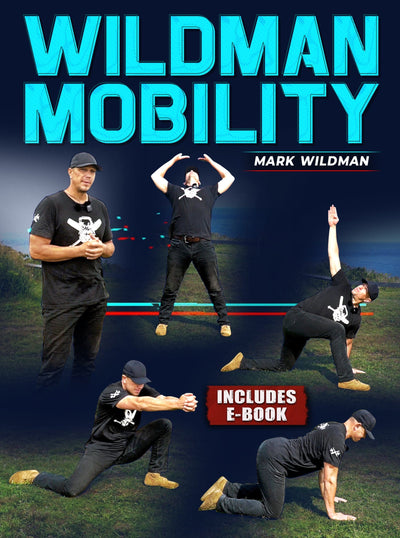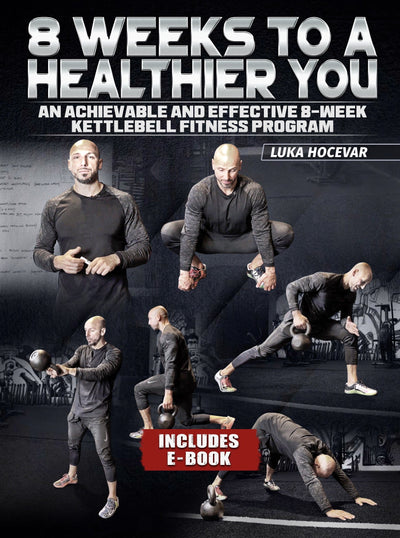Kettlebell Marches for Core
When it comes to building a strong, resilient core, there's a tool that has withstood the test of time - the kettlebell. Kettlebell marches for core, a dynamic core exercise, have gained popularity in recent years for their incredible effectiveness in developing core strength and stability. In this comprehensive blog, we'll explore the history of kettlebells, delve into the mechanics of kettlebell marches, discuss their benefits, and provide you with a step-by-step guide to incorporating this challenging exercise into your fitness routine.
What this article covers:
- The History of Kettlebells: A Timeless Strength Tool
- Kettlebells and Core Training: A Match Made in Fitness Heaven
- Why Kettlebells for Core?
- How to Perform Kettlebell Marches: Step by Step
- Common Mistakes to Avoid
- Incorporating Kettlebell Marches into Your Fitness Routine
- Conclusion: Elevate Your Core Strength with Kettlebell Marches
The History of Kettlebells: A Timeless Strength Tool
Before we dive into the specifics of kettlebell marches, let's take a moment to appreciate the rich history of kettlebells themselves. Kettlebells originated in Russia in the 18th century, where they were initially used as counterweights for market scales. Russian farmers and strongmen soon realized the utility of these weights for building strength and endurance. Over time, kettlebell training evolved into a structured discipline, with many famous strongmen and athletes championing its benefits.
In the early 20th century, Russian fitness pioneer Pavel Tsatsouline played a significant role in introducing kettlebell training to the Western world. His efforts led to the resurgence of kettlebell training as a mainstream fitness modality. Today, kettlebells have become a staple in gyms and home workouts worldwide.
Kettlebells and Core Training: A Match Made in Fitness Heaven
Kettlebell training, in general, offers a unique blend of strength, cardiovascular conditioning, and mobility enhancement. However, where kettlebells truly shine is in their ability to target the core muscles.
Why Kettlebells for Core?
Unilateral Loading: Unlike traditional core exercises that often focus on symmetric movements, kettlebell exercises frequently involve unilateral loading. This means one side of your body bears the weight while the other side stabilizes. This challenges your core to work harder to maintain balance and stability. Kettlebells also lend themselves immensely to upper body kettlebell workouts with great complementary exercises like around the world kettlebell exercises.
Functional Movements: Kettlebell core workouts often mimic real-life movements, making them highly functional. Your core muscles are essential for stability during activities like lifting, carrying, and even walking. Kettlebell training prepares your core for the demands of everyday life.
Dynamic Workouts: Kettlebell movements, such as swings, snatches, and marches, involve dynamic, whole-body movements. These exercises engage not only the superficial abdominal muscles but also the deeper core muscles that support your spine.
The Core Benefits of Kettlebell Marches
Kettlebell marches, in particular, are an exceptional core workout that deserves a closer look. Here are some key benefits:
Core Strength: Kettlebell marches target the entire core, including the rectus abdominis, obliques, transverse abdominis, and lower back muscles. This comprehensive engagement builds functional strength.
Stability: The off-center weight distribution of the kettlebell forces your core to stabilize your body. This helps improve balance and reduces the risk of injury in various activities.
Coordination: Kettlebell marches require you to move both your arms and legs in a coordinated fashion. This not only challenges your core but also enhances overall body coordination.
Cardiovascular Conditioning: Kettlebell marches can elevate your heart rate, making them an excellent addition to high-intensity interval training (HIIT) routines. This helps you burn calories and improve cardiovascular fitness while strengthening your core.
Versatility: You can perform kettlebell marches in various ways – standing, walking, or even in a static lunge position. This versatility allows you to tailor your core workout to your fitness level and goals.
How to Perform Kettlebell Marches: Step by Step
Now that we've explored the history and benefits of kettlebell marches, let's break down how to perform this exercise correctly.
Instructions
Select the Right Kettlebell: Start with a kettlebell that's challenging but manageable. A good starting weight for most individuals is between 12 to 16 kilograms (26 to 35 pounds).
Set Up: Stand with your feet hip-width apart and place the kettlebell on the floor between your feet.
Proper Grip: Bend at your hips and knees to reach down and grab the kettlebell handle with both hands. Keep your back flat and your chest up.
Lift the Kettlebell: With a firm grip, lift the kettlebell off the ground by extending your hips and knees. Hold it at chest height, close to your body, and engage your core.
Begin Marching: Start marching in place by lifting your knees alternately, just as you would when walking or jogging. Make sure to maintain a strong core throughout the exercise.
Maintain a Steady Pace: Keep a controlled and consistent tempo. Avoid rushing the movement, and focus on maintaining proper form and core engagement.
Duration: Aim to perform kettlebell marches for 30 seconds to 1 minute, depending on your fitness level. Gradually increase the duration as you become more proficient.
Rest and Repeat: After completing your set, gently lower the kettlebell to the ground and take a brief rest. Perform 2-3 sets, gradually increasing the intensity and duration as you progress.
Common Mistakes to Avoid
Losing Core Engagement: Keep your core muscles engaged throughout the exercise. Avoid letting your lower back arch or your shoulders slump forward.
Overextending the Knees: Lift your knees to a comfortable height during the march. Avoid excessive knee lifting, which can strain your hip flexors.
Rushing the Movement: Maintain a controlled pace rather than rushing through the exercise. This ensures proper form and maximizes the engagement of your core muscles.
Using an Inappropriate Kettlebell Weight: Don't select a kettlebell that's too heavy, as it can compromise your form and lead to injury. Conversely, a kettlebell that's too light may not provide enough resistance to challenge your core effectively.
Incorporating Kettlebell Marches into Your Fitness Routine
Now that you've mastered the basics of kettlebell marches and understand their benefits, it's time to incorporate them into your fitness routine. Here's a sample workout plan to get you started:
Warm-Up:
Spend 5-10 minutes doing dynamic stretches and light cardio to prepare your body for exercise.
Kettlebell March Routine:
Perform 2-3 sets of kettlebell marches for 30 seconds to 1 minute each, with a 30-second rest between sets.
As you progress, increase the duration or add more sets.
You can also combine kettlebell marches with other core exercises like planks or Russian twists for a well-rounded core workout.
Cool Down:
Spend 5-10 minutes stretching and performing static stretches for your core, hip flexors, and lower back.
Frequency:
Aim to incorporate kettlebell marches into your routine 2-3 times per week, allowing for adequate rest and recovery between sessions.
Conclusion: Elevate Your Core Strength with Kettlebell Marches
Kettlebell marches are a dynamic and effective core exercise that can help you build a strong and stable core while providing numerous additional benefits. Their rich history, functional approach to fitness, and versatility make them a valuable addition to any workout routine. Just remember to start with the appropriate weight, focus on proper form, and gradually increase the intensity as you progress. With dedication and consistency, kettlebell marches can help you unlock the full potential of your core strength, enhancing your overall fitness and well-being. So, grab a kettlebell and start marching your way to a stronger, more resilient core today!
Did you find the blog helpful? If so, consider checking out other guides:
- Kettlebell Tricep Workout
- Building Muscle with Kettlebells
- Kettlebell Pushups
- Kettlebell Cleans
- Kettlebell Lift
- How to Do a Kettlebell Clean
- Kettlebell Overhead Tricep Extension
- The Kettlebell Side Swing
- Heavy Kettlebell Swings
- Kettlebell Swing Variations
- CrossFit Kettlebell Swings
- The Kettlebell Swing Challenge
- Kettlebell Two Hand Swing
- Kettlebell Swing for Beginners
- Kettlebell Swing Form





